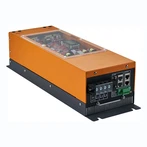A Comprehensive Guide for Choosing the Right UV Power Supply
Water treatment is a critical industry where UV disinfection has become a gold standard for inactivating harmful microorganisms-from bacteria like E. coli to viruses and protozoa-without adding chemicals. However, the effectiveness of UV disinfection hinges entirely on one key component: the UV power supply. The wrong power supply can lead to inconsistent UV intensity, failed disinfection, or excessive energy waste. So, which UV power supply actually fits water treatment needs? Let's break down the factors that matter and match them to the right solutions.
First: Understand Water Treatment's Unique UV Power Demands
Water treatment applications vary widely-from small residential well-water systems to large municipal plants processing millions of gallons daily, and industrial wastewater facilities handling high-contamination loads. Each scenario has non-negotiable requirements for UV power supplies:
High Power Stability: Fluctuations in voltage or current cause UV lamp intensity to drop, leaving pathogens unneutralized. For example, a 5% voltage dip can reduce UV output by 10%, risking non-compliance with EPA or local water quality standards.
Wide Voltage Range for Lamp Compatibility: Water treatment uses high-power UV lamps (often 500W–3000W) that require 1200V–2500V DC output. The power supply must match these lamp specifications to avoid premature burnout.
Environmental Durability: Treatment plants are often humid, dusty, or exposed to temperature swings (0°C–55°C). A power supply with robust cooling (e.g., forced air) and corrosion-resistant components is essential.
Energy Efficiency: Municipal and industrial plants run UV systems 24/7-inefficient power supplies translate to thousands of dollars in wasted electricity annually.
Matching UV Power Supplies to Water Treatment Scenarios
1. Large-Scale Municipal/Industrial Water Treatment: HLTA Series
For facilities processing 100,000+ gallons of water daily (e.g., city water plants, chemical manufacturing wastewater), the HLTA Series UV Power Supply is the ideal fit. Here's why:
High-Power Output: With a 500W–3000W range and 1200V–2500V DC adjustable output, it drives multiple high-intensity UV lamps (common in multi-lamp disinfection chambers) to deliver consistent, high-dose UV energy.
95%+ Efficiency: Using LLC resonant topology and high-grade MOSFETs, the HLTA Series minimizes energy loss-critical for 24/7 operation. A municipal plant using a 2000W HLTA unit can save ~175 kWh annually compared to 90% efficient traditional supplies.
Stability & Protection: Built-in overvoltage, overcurrent, and thermal protection prevent shutdowns during voltage spikes or lamp anomalies. Its voltage fluctuation control (≤±1%) ensures UV intensity stays within regulatory limits (e.g., 40 mJ/cm² for drinking water).
Real-World Example: A mid-sized municipal plant in Ohio switched to HLTA Series power supplies for its 5-million-gallon daily treatment system. Post-installation, they reduced energy costs by 8% and eliminated 3 instances of non-compliant disinfection (previously caused by unstable power).
2. Small-Scale Water Treatment: WBTA Series
For smaller applications-residential UV filters, RV water systems, or small commercial facilities (e.g., restaurants, schools) processing <10,000 gallons daily-the WBTA Series is the practical choice.
Compact & Low-Power Design: At 100W–500W output, it fits in tight spaces (e.g., under-sink UV units) and runs on standard 120V AC power.
Cost-Effective: Priced 30% lower than industrial-grade supplies, it meets budget constraints for small operations while still delivering stable power for 100W–300W UV lamps.
Easy Installation: Plug-and-play controls and IP44 dust/water resistance make it suitable for non-technical users (e.g., homeowners installing a well-water UV system).
Key Takeaway: Choose Based on Scale & Compliance
For water treatment, there's no "one-size-fits-all" UV power supply-but the decision boils down to treatment volume and regulatory requirements. Large facilities need the HLTA Series' power and efficiency; small-scale users benefit from the WBTA Series' compact, affordable design. By matching the supply to your system's needs, you ensure reliable disinfection, lower costs, and long-term compliance.





